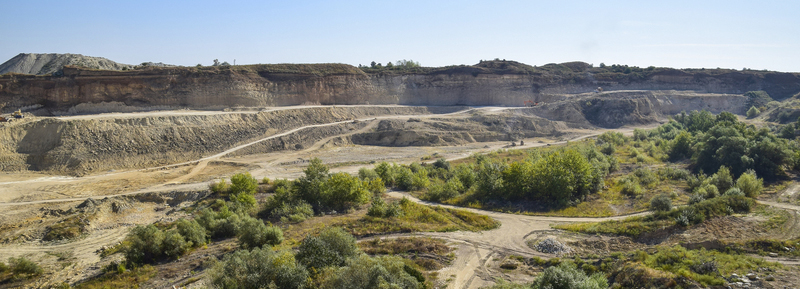Environmental
Implications of the COVID-19 Crisis Webinar
The Environmental
Group presented a live webinar on Thursday, April 30th, entitled
"Environmental Implications of the COVID-19 Crisis." The webinar
discussed site remediation and many other topics, including New Jersey
requirements in light of Executive Orders 107 and 122, USEPA guidance on
enforcement discretion and ongoing field work, DOJ suspension of penalty
collection, NJDEP policy and practice statements, recent case experience with
the Department, and Anecdotes and best practices for these extraordinary
times. A recording of the webinar is available upon request.
COVID-19 and Environmental Remediation: Guidance and Practical Tips on Whether Remediation is “Essential”
New Jersey and many other states continue to issue directives outlining which businesses may continue to operate during the COVID-19 pandemic. The swiftly changing landscape is uncharted and difficult to navigate; this is especially true for parties involved in site remediation, either as a remediating party or as the environmental consultant or Licensed Site Remediation Professional performing the remedial work. While each site has unique issues that should be vetted among the remediating party, the consultant/LSRP and counsel, as appropriate, in this blog entry we outline the applicable New Jersey directives and offer some best practices to consider.
Framework for Operations Under Relevant Executive Orders
Under Executive Order 107, which Governor Phil Murphy issued on March 21st, all non-essential retail places of business are required to close to the public, allowing only essential retail businesses to remain open. These essential retail businesses include grocery stores, pet stores and pharmacies, among others. In addition, all entertainment and recreational businesses are required to close. Thus, on its face, Executive Order 107 does not prohibit environmental remediation because this activity does not qualify as a retail, entertainment or recreational business. Under Executive Order 107, however, all businesses in New Jersey are to reduce on-site staff to the minimum number necessary to perform essential operations and to accommodate the remainder of their workforce through work-from-home or similar arrangements. In addition, when in public everyone is to practice social distancing.
In the wake of Executive Order 107, the New Jersey Department of Environmental Protection (“NJDEP”) was asked to clarify that “essential services” include site remediation. The inquiry was made by regulated entities and environmental service providers, including laboratories, environmental consultants, LSRPs, subcontractors and staff persons whose primary functions are to conduct, monitor, maintain, or support activities for the protection of public health, safety and the environment, including the provision of supplies necessary for these protective purposes. In response, the Department advised correctly that businesses not specifically directed to close “may continue operating at this time consistent with the requirements of E[xecutive] O[rder] 107 for ensuring social distancing, reducing on-site staff to the minimum persons necessary, and accommodating as much remote work as practicable.” NJDEP Listserv Email, “[SRRA] – COVID-19 Update,” March 26, 2020. Accordingly, NJDEP stated that “no formal designation as essential of any of the sectors or organizations that have contacted DEP is necessary or expected at this time.” Rather, NJDEP observed that “essential on-site staffing determinations will differ by sector and operational circumstances” and left it to the professional judgment of each organization to determine how to meet the objectives of Executive Order 107 to the maximum extent practicable. Thus, the Department’s approach appeared to acknowledge that Executive Order 107 was not directed to site remediation activities.
On April 8th, Governor Murphy issued Executive Order 122, effective on Friday, April 10th at 8 p.m. Among other things, Executive Order 122 requires non-essential construction projects to cease. The Executive Order lists various types of projects that are considered “essential construction projects,” including the following activities that may apply to site remediation cases found in paragraph 2 of the Order: any project that is ordered or contracted for by federal, State, county, or municipal government, or any project that must be completed to meet a deadline established by the federal government (subsection (l)); and, any work on a non-essential construction project that is required to “remediate a site” (subsection (m)).
Executive Order 122 has now injected uncertainty as to whether site remediation work may continue. Fundamentally, is site remediation considered “construction”? For many tasks (e.g., preliminary assessment review, groundwater and soil sampling), site remediation does not resemble and likely should not be considered to be construction activity that would be impacted by Executive Order 122 and thus may continue under Executive Order 107. For other tasks (e.g., construction of a groundwater pump and treat system, construction of a soil cap), site remediation and construction activity seems to overlap. Then there are activities that are not as clear (e.g., installation of monitoring wells, installation of a sub-slab depressurization system).
The applicability of Executive Order 122 to these latter categories, if they are to be considered construction activities, seems to turn on the interpretation of subsections (l) and (m). Subsection (l) would apply if the site remediation work is considered as being performed pursuant to a government “order.” Some site remediation cases are being performed under an Administrative Consent Order (“ACO”) with NJDEP; however, the majority of site remediation cases are conducted under the LSRP program in which there is no “order” but a legal obligation to remediate pursuant to NJDEP requirements. To interpret Executive Order 122 to allow site remediation to proceed if conducted pursuant to an ACO, but not under the LSRP program, is not a sensible distinction. Subsection (m) allows non-essential construction necessary “to remediate a site” to proceed, but does this contemplate the NJDEP site remediation program? The other activities listed in this subsection all relate to activities necessary to secure a construction site so that it does not pose a threat during the moratorium. Does “remediate a site” refer to fixing damage caused by construction activity or does it refer to the activities required by the term of art “site remediation”?
At this point, NJDEP should, and has indicated it will, step in to provide guidance on how Executive Order 122 should be interpreted in connection with NJDEP program requirements, which should include the site remediation program. Until that time, however, regulated entities and their professionals should navigate the Executive Orders based upon their specific circumstances.
Best Practices for Site Remediation
We understand anecdotally from the environmental consulting firms that we and our clients work with that field and lab work is proceeding, while project management functions are also being conducted, albeit remotely. As of this writing, there is no express prohibition on a business allowing remediation work to be conducted at its premises, even if the premises are closed to the public. However, to the extent companies anticipate site remediation work taking place at facilities or properties, it is a best practice to confirm that the environmental engineering firm is engaging in proper precautions to comply with Executive Order 107.
We suggest that environmental professionals and regulated entities consider implementing the following practices for any site remediation work performed during this time:
- alerting the local police department about the work to be performed, so that if a neighbor or passer-by calls to report alleged non-compliance with the Executive Orders, the police are already aware of the work and its purpose;
- providing employees who will be performing work in the field with “essential employee” letters to document they are performing an “essential” service that cannot be performed remotely, as contemplated by Executive Order 107;
- respecting the concerns of neighbors, employees and others who may be impacted by the work. For example, requesting access for an off-site vapor intrusion investigation requires special consideration at this time, especially if it involves a request to access a residence.
- discussing site specific issues with NJDEP. We have had success in recent weeks discussing site specific concerns with the Department, which at times has granted extensions or other accommodation to address the specific concern.
- preparing a plan for de-mobilization in the event the remedial work at the site is required to cease as a result of COVID-19.
The COVID-19 pandemic requires all of us to adapt to ever-changing conditions. Accordingly, communicating frequently, keeping apprised of developments, and consulting with legal advisors can assist regulated entities and their environmental consultants in complying with the competing demands that exist at this time.
For your convenience, Executive Order 107 can be found here and Executive Order 122 can be found here.
For more information, please contact the author Alexa Richman-LaLonde at alalonde@riker.com or any attorney in our Environmental Practice Group.
USEPA
Exercises Enforcement Discretion in Response to the COVID-19 Pandemic
In
response to the COVID-19 pandemic, the United States Environmental Protection
Agency (“USEPA”) has decided to exercise enforcement discretion. That is,
USEPA will review any violations and determine if they result from the
pandemic; if so, USEPA will decide the proper enforcement action, if
any. See USEPA Memorandum, COVID-19 Implications for
EPA’s Enforcement and Compliance Assurance Program, dated March 26, 2020 (the
“Policy”).
Specifically,
USEPA recognizes that the COVID-19 pandemic will impact certain facility and
laboratory operations, which may result in potential violations of reporting
obligations, permit limits, regulations and statutes.
USEPA has
set forth guidelines for regulated facilities seeking enforcement discretion
due to the pandemic. In order to seek enforcement discretion, a regulated
facility must meet the following requirements:
1. Make
every effort to comply with environmental requirements;
2. If compliance
is not reasonably practicable, it must
a. Document the information,
actions and conditions identified in a. through d.
b. Return to compliance as soon
as possible;
c. Identify how COVID-19 was the
reason for non-compliance and identify the decisions and actions in response
and the efforts to comply;
d. Identify the specific nature
and dates of non-compliance;
e. Act responsibly;
USEPA is
applying the Policy retroactively starting March 13, 2020 and will provide
notice before terminating the Policy.
Importantly,
the Policy notes that states may take a different enforcement approach.
Where USEPA shares jurisdiction with a state, it will consult or coordinate
with the state on enforcement obligations in certain circumstances.
The Policy
also contains specific information about different instances of
non-compliance. For instance, with respect to routine compliance
monitoring and testing, a regulated entity that is unable to meet its
obligations should use existing procedures to report non-compliance.
USEPA, in general, is not going to seek penalties for violations of
routine monitoring or testing if such non-compliance is the result of the
COVID-19 pandemic. Additionally, when the pandemic ends and the Policy is
no longer needed, USEPA is not going to require the regulated entity to play
“catch up” on missed routine monitoring and testing, if such non-compliance did
not exceed a three-month period. For bi-annual or annual reporting,
however, after the Policy is terminated, USEPA expects the regulated entity to
assume compliance as soon as possible, including submittal of late
reports. Also, if a submission requires an original signature, USEPA now
is accepting a digital or electronic signature.
Entities
that are unable to comply with USEPA settlement agreements or consent decrees
should follow the notice procedures set forth in those documents. With
respect to consent decrees, USEPA will coordinate with the Department of
Justice on enforcement discretion for stipulated penalties. It should be
noted that courts maintain jurisdiction over consent decrees and can take their
own actions regarding non-compliance.
If
non-compliance resulting from the COVID-19 pandemic may result in an imminent
threat to human health or the environment or cause a facility to fail to meet
emission limitations for air, water or wastewater, an entity should immediately
contact the proper authority (USEPA, State or Tribe) responsible for
implementing the relevant program. In cases of an imminent threat, USEPA
encourages facilities to work with USEPA regional offices, even if USEPA is not
the implementing authority. USEPA will work with facilities to properly
address these issues.
Moreover,
a facility that is a generator of hazardous waste that is unable to transfer
its hazardous waste off-site within the time limits set forth in the Resource
Conservation Recovery Act (“RCRA”) should continue to properly label and store
its waste. In these cases, even though the facility failed to remove its
waste timely under RCRA, USEPA will continue to consider the facility a
hazardous waste generator and not a facility that treats, transfers or stores
hazardous wastes. Very Small Quantity and Small Quantity Generators of
hazardous waste will retain their status even if their storage volume
thresholds are exceeded during this time period.
USEPA
expects that public water supply systems will continue normal operations and
maintenance. All other facility operations not specifically identified by
USEPA in the policy, should follow the guidelines above if non-compliance is
unavoidable.
The Policy
makes it clear that it does not relieve any entity from responsibility to
prevent, respond to or report accidental releases of hazardous substances and
pollutants. The Policy is not a free pass to release pollutants.
The Policy
does not apply to Superfund and RCRA Corrective Action enforcement
instruments. USEPA will be addressing compliance with these instruments
in separate correspondence. It also does not apply to imports, such as
pesticides, or criminal violations.
Although
the Policy sets forth guidelines for USEPA enforcement discretion during this
trying time, facilities should take all possible steps to meet their regulatory
obligations. If this is not possible given the COVID-19 pandemic, the
facilities should work with counsel to determine how to proceed and properly
document any non-compliance in order to avail itself of the USEPA Policy.
For more information, please contact the author Laurie Sands at lsands@riker.com or any attorney in our Environmental Practice Group.
Who Pays When Remediation Goes Wrong? A Federal Court’s Evaluation of Contractor Liability
The Comprehensive Environmental Response, Compensation, and Liability Act of 1980 (“CERCLA”) has been a prodigious generator of litigation for decades. First, the government sought to compel potentially responsible parties (“PRPs”) to clean up contaminated sites. Then, those PRPs who were found liable or who settled with the government sought contribution from other PRPs. Now, even after these interminable disputes over liability for remediation costs are resolved, the implementation of costly remedies can give rise to yet more litigation if those remedies fail. A recent decision by the federal district court in Philadelphia in Cottman Avenue PRP Group v. AMEC Foster Wheeler Environmental Infrastructure Inc., arising from one of the earliest CERCLA Superfund sites, is an example of this last type of case and offers important lessons both for parties responsible for remediation and the contractors they hire to fulfill those obligations.
A predecessor of AMEC Foster Wheeler (“AMEC”), acting as a remediation contractor, designed a sheet pile wall intended to prevent PCB-contaminated soil at a Philadelphia Superfund site from falling into the Delaware River. Construction of the sheet pile wall was completed in 2010, but by 2012, cracks in the wall and unwanted movement of the wall were observed. The PRP group, making claims both under CERCLA and its contract with AMEC, sued AMEC in 2016 after the PRP group had to repair the wall.
AMEC prevailed on the CERCLA claims based on its assertion of the statutory defense for “response action contractors.” That is, CERCLA provides that “a response action contractor with respect to any release or threatened release of a hazardous substance … shall not be liable … to any person for injuries, costs, damages, expenses, or other liability … which results from such release or threatened release”; however, a response action contractor nonetheless will be liable for “a release that is caused by” the contractor’s negligence. 42 U.S.C. § 9619(a)(1)-(2). (The New Jersey Spill Act includes a similar defense for contractors, see N.J.S.A. 58:10-23.11g1.) The court held that AMEC could not be liable under this standard because the PRP group incurred costs in response to a threatened release of PCBs only, and could not prove that an actual release occurred. In fact, the PRP group’s repeated assurances to the United States Environmental Protection Agency that the defective sheet pile wall did not cause any releases to the river ultimately proved fatal to its CERCLA claim against AMEC. The court concluded that, under the “plain terms” of the response action contractor defense, a contractor cannot be liable for a threatened release of hazardous substances under CERCLA because the statute immunizes them from liability for a release or threatened release, but the exception creating liability refers only to a release caused by the contractor’s negligence. Although a reasonable interpretation of this CERCLA provision when read in isolation, it seems inconsistent with the statute’s general liability scheme, which imposes liability for both releases and threatened releases.
In contrast to the dismissal of its CERCLA claim, the PRP group had mixed success on its contract claims. Yet, the success or failure of the contract arguments rested not on the intent of the parties as expressed in the contract, but rather on certain background legal rules that the parties may not have contemplated when they entered the agreement.
First, the court found that the warranty provided by AMEC for the remediation work had expired and, as a result, the breach of warranty claim brought by the PRP Group was untimely. Under Pennsylvania law, unless the contract specifically provides otherwise, the “discovery rule” does not apply to breach of warranty claims, so the four-year statute of limitations applicable to breach of warranty begins to run upon completion of the work under the contract, regardless of when the defect causing the breach of warranty becomes apparent. Here, AMEC’s final inspection of the sheet pile wall under the contract occurred in 2011 and the PRP group did not sue until 2016, so the breach of warranty claim was barred. This is a harsh rule for remediating parties, who might not expect that their warranty for a remedy intended to last for decades would evaporate after four years.
AMEC also raised timeliness as a defense to the PRP group’s claim under the contractual indemnity, but the court ruled in favor of the PRP group on that issue. Specifically, AMEC unsuccessfully argued that its indemnification obligations ended upon termination of the contract in 2011 because the indemnification clause did not state that it survived termination, whereas other terms of the contract included explicit “survival” language. The court analogized the indemnification clause to “structural provisions relating to remedies and dispute resolution,” such as an arbitration clause, which usually survive termination of the contract. Thus, in contrast to the warranty, specific language was not needed to preserve indemnification claims that might arise after the remedy was constructed.
Finally, AMEC could not escape claims that it breached the contract by not procuring all of the required insurance policies. Although during the term of the contract AMEC intermittently provided certificates of insurance to the PRP group, in discovery it could not produce insurance policies that satisfied the requirements under the contract. Unlike the breach of warranty claim, the “discovery rule” did apply to this breach of contract claim, so the PRP group could bring the claim even though the breach—the failure to obtain insurance—had occurred long before the PRP group brought the lawsuit in 2016.
Remediating parties and the engineers and contractors they hire should observe three takeaways from the Cottman Avenue case:
- Response action contractors have a powerful and unique defense to statutory environmental claims. Strict liability does not apply to response action contractors under CERCLA (or the New Jersey Spill Act), and, under this case, even a negligent contractor would not be liable for threatened releases. Like the Cottman Avenue PRP Group, remediating parties may be caught in a bind between assuring regulators that no contaminants have been or will be released and preserving potential CERCLA claims against their contractors.
- Specify survival of warranties and indemnification provisions. Contracts often contain an explicit period that a warranty will remain in effect and also provide that indemnities will survive termination of the agreement. The failure to include these terms in this contract led to extensive litigation that could have been avoided and that probably produced results that the parties would not have expected when they entered the contract.
- Pay attention to insurance requirements (and other ongoing obligations). Before agreeing to maintain certain insurance, parties should make sure they have the ability to provide that insurance or evidence thereof, which it seems was not done in this case. It may be tempting to put a contract out of sight and out of mind after it is signed, but without a system to make sure ongoing insurance obligations are met, a party may find itself in the unfortunate position of acting as its own insurer.
For more information, please contact the author Michael Kettler at mkettler@riker.com or any attorney in our Environmental Practice Group.
Attention NJ Developers: NJDEP Adopts Amendments to Stormwater Management Rules Requiring the Use of Green Infrastructure
Last year, the New Jersey Department of Environmental Protection proposed significant changes to the State’s Stormwater Management Rules, N.J.A.C. 7:8 et seq. (the “SWMR” or “Rules”) that set forth standards and requirements for the management of stormwater runoff associated with major developments. On March 2, 2020, the amendments to the SWMR were adopted with only minor, non-substantive revisions to the original proposal. Most significantly, the amendments require major developments to utilize green infrastructure to meet the groundwater recharge and stormwater runoff quantity and quality standards. In addition, the amendments revised the definition of a “major development” in a manner that considerably expands the reach of the Rules. Developers should take note of these changes as they are fairly burdensome, and thus, likely to increase costs for new developments and construction projects. Notably, however, the SWMR amendments do not become operative until March 2, 2021 (one year from adoption).
While our April 9, 2019 blog article, Storm(y) Waters on the Horizon: Changes to Regulation of Stormwater in New Jersey, highlighted a few of the proposed revisions to the SWMR, below is a summary of several of the key changes that have since been adopted:
- Green Infrastructure – The NJDEP replaced the requirement to incorporate nonstructural stormwater management strategies to the “maximum extent practicable” with a more specific requirement to use green infrastructure to meet the applicable stormwater management standards. “Green infrastructure” is defined as a stormwater management measure that manages stormwater close to its source either by:
- Treating stormwater through infiltration into subsoil or by filtration through vegetation or soil; or
- Storing stormwater runoff for reuse.
Developers will need to use non-structural measures like bio-swales, green roofs, rain gardens and pervious paving to address stormwater runoff.
- Definition of Major Development – The definition was revised to mean an individual development as well as multiple developments that individually or collectively result in:
- The disturbance of one or more acres of land since February 2, 2004;
- The creation of one-quarter acre or more of “regulated impervious surface” since February 2, 2004;
- The creation of one-quarter acre or more of “regulated motor vehicle surface” after March 2, 2021; or
- A combination of 2 and 3 above that totals an area of one-quarter acre or more.
Major development includes all developments that are part of a common plan of development or sale (for example, phased residential or commercial development) that collectively or individually meet any one or more of the items above. This change certainly broadens the scope of projects that will trigger compliance with the SWMR and it includes a look-back to 2004.
- Total Suspended Solids (“TSS”) Removal Requirement – The amendments change the TSS removal requirements. Specifically, the TSS removal requirements now apply to runoff from motor vehicle surfaces, but do not apply to impervious surfaces not traveled by motor vehicles, like sidewalks, hardscape plazas, and rooftops. While this adjustment to the SWMR relieves developers of complying with the TSS removal requirements for certain impervious surfaces, it may expand the requirement to areas like gravel roadways that were not captured by the requirements in the past.
As noted above, the amendments to the SWMR were adopted with only minor cleanup/clarification revisions to the original proposal. The only change of particular note relates to the obligation to obtain approval of a variance in the event that green infrastructure will not be used to satisfy the applicable stormwater management standards. Since certain types of Manufactured Treatment Devices (“MTDs”) meet the definition of “green infrastructure,” the NJDEP clarified that a variance for use of an MTD is only required if the MTD does not meet the definition of “green infrastructure.”
According to the NJDEP, the amendments to the SWMR will more effectively reduce stormwater volume, reduce erosion, encourage stormwater infiltration and groundwater recharge, and minimize the discharge of stormwater-related pollutants into the environment. While environmental groups have criticized the amendments as not doing enough to address environmental issues related to stormwater runoff, these changes impose significant new burdens on developers. Now that these changes to the SWMR have been adopted, developers and property owners should carefully consider how these changes may affect their existing or planned projects.
Take note that the NJDEP plans to make additional revisions to the SWMR that will go beyond the recently adopted amendments. We plan to apprise our readers of these changes as more information becomes available.
For more information, please contact the author Jaan M. Haus at jhaus@riker.com or any attorney in our Environmental Practice Group.
Governor Murphy Launches Broad Regulatory Reform to Protect Against Climate Threats
Governor Phil Murphy took a groundbreaking step toward reducing greenhouse gas emissions and addressing climate change threats in New Jersey, when, on January 27, 2020, he simultaneously unveiled the final version of the updated Energy Master Plan (the “EMP”) and signed Executive Order No. 100 (“EO 100”). As discussed below, the EMP charts a course for achieving Murphy’s goal of 100% clean energy by 2050, while EO 100, among other things, directs the New Jersey Department of Environmental Protection to immediately begin developing regulatory reforms to address sea level rise and other climate change threats under the banner, Protecting Against Climate Threats (“PACT”). The EMP and EO 100 represent long-term initiatives that will be implemented over a number of years and will have significant impacts on a wide variety of businesses within New Jersey.
The Energy Master Plan
Governor Murphy previously signed Executive Order No. 28, in May 2018, which directed the New Jersey Board of Public Utilities (“NJBPU”) to develop a comprehensive statewide energy plan—entitled the Energy Master Plan—in order to move the state away from energy sources that contribute to climate change. Now that it has been finalized, the EMP contains the tactical blueprint outlining how the state can work toward the goal of achieving 100% clean energy usage by 2050. This broad blueprint includes seven key strategies aimed at reaching the 2050 goal:
- Reducing energy consumption and emissions in the transportation sector by encouraging electric vehicles;
- Accelerating the use and development of renewable energy and distributed energy resources;
- Optimizing energy efficiency while reducing energy demands through new programs and strengthening building and energy codes;
- Reducing energy consumption and emissions from new and existing buildings;
- Decarbonizing and modernizing New Jersey’s energy system by reducing reliance on natural gas and increasing electrification;
- Supporting community energy planning and local renewable power generation in low-income and environmental justice communities; and
- Expanding the clean energy economy through investments in clean energy jobs and technological development.
As New Jersey continues to move towards clean energy pursuant to the EMP, specific issues will arise. For instance, the NJBPU recently approved a program to aid in the transition from the current Solar Renewable Energy Certificate (“SREC”) Program, which provides a financial incentive for energy generated by a solar facility. The transition program is intended to smooth the conversion from more-valuable, legacy SRECs to an as-yet-to-be determined successor incentive program, but the annual value of the Transition Renewable Energy Certificate (“TREC”) has yet to be fully and finally determined. As a result, it is not yet clear how the TREC program, or the other initiatives highlighted in the EMP, will impact the financing and development of renewable energy projects within the state.
The PACT Regulations
EO 100, in turn, addresses climate change threats on the regulatory front in several ways. Initially, EO 100 directs the NJDEP within two years to establish a monitoring and reporting program designed to identify all significant sources of greenhouse gas emissions in the state. In addition to addressing greenhouse gas emissions, EO 100 instructs the NJDEP to integrate climate change considerations into its existing regulatory and permitting programs, including land use permitting. EO 100 also requires the NJDEP Commissioner to issue and update periodically an administrative order within which the Department will identify the specific regulations it intends to modify to include climate change considerations. Pursuant to this directive, NJDEP Commissioner Catherine McCabe issued Administrative Order No. 2020-01 (the “AO”) on the same day as EO 100’s execution.
The AO describes the Department’s intent to prepare a report by June 30, 2020 that will recommend necessary regulatory measures to reduce greenhouse gas emissions and climate pollutants to meet the 2050 emissions reduction goal. In support of this goal, the NJDEP will propose regulations to establish a greenhouse gas monitoring and reporting program to identify and monitor all significant sources of statewide greenhouse gas emissions, and to incorporate climate change considerations, such as sea level rise, into land use regulatory programs within the next two years.
Specific programs named in the AO to be modified include the Coastal Zone Management Rules, Freshwater Wetlands Rules, Flood Hazard Control Act, and Stormwater Management Rules. The incorporation of these considerations into such programs will undoubtedly result in changes to permit applications and renewals for development projects that qualify under these programs, including projects located on coastal waterfront areas or near flood-prone areas further inland. The full extent of the changes to applicable regulations will not be known for some time, but the NJDEP has begun to schedule public hearings to discuss its plans.
Conclusion
As Governor Murphy’s administration begins implementing its strategies to confront climate threats in a multitude of areas ranging from technological changes in transportation to regulatory changes in land use permitting, the degree to which these strategies will impact New Jersey’s future is uncertain. However, the Garden State can certainly expect to see significant regulatory changes occurring rapidly in numerous areas in the coming months and years.
For more information, please contact the author Jason M. Boyle at jboyle@riker.com or any attorney in our Environmental Practice Group.
New Jersey Expands Solid Waste Licensing Regime to Soil and Fill Recyclers
Update as of May 2, 2020: Through Executive Order 136, Governor Murphy has extended the deadlines applicable to soil and fill recycling registrations and licenses as recited in this blog post by the number of days of the Public Health Emergency declared in Executive Order No. 103 as a result of the COVID-19 pandemic plus an additional 60 days.
New Jersey continues to crack down on illegal dumping of contaminated soil by increasing regulation of soil and fill recycling businesses. A law signed into effect by Governor Murphy on January 21, 2020, requires soil and fill recycling businesses to go through the A-901 solid waste licensing program, which was adopted many years ago in response to the infiltration of organized crime into the solid waste business, and ensures through an in-depth licensing regime that those engaged in the business of solid waste in New Jersey have the requisite integrity, reliability, expertise and competence.
The A-901 licensing program typically requires that businesses apply for and obtain an A-901 license before operating, but in order to avoid interfering with ongoing business operations, the new law sets out a two stage process to expand the A-901 licensing program to businesses that are already engaged in soil and fill recycling.
- Soil and fill recycling businesses first will need to register with the New Jersey Department of Environmental Protection by April 20, 2020; while the registration form has not yet been made available, the information that will need to be included on the form includes basic information, such as the name of the business and its address, although it is possible that complex issues will arise for certain businesses at this stage based on specific circumstances. Any business that submits the registration form will receive a registration from the State within 90 days. This registration is non-transferable and temporarily authorizes the registered business to continue operating its soil and fill recycling business while the business applies for a soil and fill recycling license.
- Businesses then will need to submit an application for a soil and fill recycling license, which is akin to an A-901 license. If the business has a soil and fill registration and it submits the license application by October 17, 2020, it may continue operating until it receives a decision on the license, which is likely to take 12 months or more. If the business does not obtain a registration by April 20th, it will need to submit an application and obtain a license before it can operate or continue to operate. As with the registration form, the details of the application have not yet been released, but it is anticipated that the license application will be consistent with the current A-901 license application. The A-901 application is a detailed disclosure form with many questions that cover a wide variety of topics. As explained in our June 25, 2019 blog post titled “Expanded A-901 Requirements Coming Soon? Sales Persons, Consultants and Soil Recyclers Should Prepare”, it is important to answer all application questions thoroughly and completely, as the State will follow up on any incomplete questions, which could delay issuance of the license.
The soil and fill recycling businesses that must comply with these new requirements include, with certain exceptions, all businesses engaged in the collection, transportation, processing, brokering, storage, purchase, sale or disposition of soil and fill recyclable materials. Soil and fill recyclable materials are defined, in turn and again with certain exceptions, as “non-putrescible aggregate substitute, including, but not limited to, broken or crushed brick, block, concrete, or other similar manufactured materials; soil or soil that may contain aggregate substitute or other debris or material, generated from land clearing, excavation, demolition or redevelopment activities that would otherwise be managed as solid waste . . . .”
The new law clarifies that the A-901 solid waste licensing program applies to brokers, and provides a new definition of a broker (i.e., a person who for direct or indirect compensation arranges for certain services involving solid waste, hazardous waste, or soil and fill recycling). According to an NJDEP Enforcement Alert from 2014 focusing on solid and hazardous waste: “A broker does not transport solid or hazardous waste and does not assume responsibility for its transport. Examples of brokers include shipping agents and management companies that coordinate cleaning and maintenance services for ships, apartments, condo associations and retail establishments.” This Enforcement Alert shows just how broadly NJDEP is likely to interpret the definition of a broker.
The new law also specifies that consultants are included within the A-901 licensing program if the consultant assists a business engaged in services relating to solid and hazardous waste or soil and fill recycling, unless the consulting services being provided require the consultant to hold another professional license from the State. For instance, a licensed site remediation professional assisting a soil and fill recycling business by conducting soil sampling should not be required to obtain an A-901 license.
These changes increase the burden on new applicants for soil and fill recycling licenses, and businesses that already have an A-901 license should prepare to include information regarding associated brokers and consultants in their next annual disclosure update. The New Jersey Department of Environmental Protection is likely to update its rules and regulations regarding solid waste licensing as a result of the new legislation; these regulatory updates, along with the forthcoming registration form and application will provide further clarity regarding the implementation of the new legislation.
For more information, please contact any attorney in our Environmental Practice Group.
New
Jersey Regulatory and Legislative Update
NJDEP Adopts Stronger
Protections for 600 Miles of Rivers and Streams
The New
Jersey Department of Environmental Protection amended the Surface Water Quality
Standards to upgrade 600 miles of rivers and streams to Category One (“C1”)
status. The NJDEP classifies waterways in three tiers: Outstanding
Natural Resource Waters, Category One waterways, and Category 2
waterways. The Department applies C1 status—the middle tier—to waterways
noted for their exceptional natural features, such as ecological value and
water supply. The upgrade to C1 status means more stringent standards apply for
wastewater and regulated discharges into these waterways, as well as 300-foot
development buffers. The new C1 waterways flow through 67 municipalities,
and include the Ramapo River, Raritan River, and Salem River.
Recently Enacted
Environmental Laws
P.L.2020,
c.24 (A2371 / S865): Requires large food waste generators to separate and
recycle food waste and amends the definition of "Class I renewable
energy."
Recently Introduced
Environmental Bills
A2523: Sets
maximum contaminant level and requires private well testing for perfluorooctane
sulfonic acid (PFOS) and perfluorooctanoic acid (PFOA). Status:
Introduced and referred to Assembly Environment and Solid Waste Committee.
ACR155: Strongly
urges DEP to adopt standards for certain drinking water contaminants as
recommended by NJ Drinking Water Quality Institute. Status: introduced
and referred to Assembly Environment and Solid Waste Committee.
A3706:
Authorizes performance of supplemental environmental projects to replace
portion of monetary penalties for environmental violations in certain
circumstances. Status: introduced and referred to Assembly Environment
and Solid Waste Committee.
ACR94: Opposes
EPA and National Highway Traffic Safety Administration's proposed reductions to
vehicle emissions and fuel efficiency standards. Status: introduced and
referred to Assembly Environment and Solid Waste Committee.
A2212 / S232:
Requires NJDEP to evaluate environmental and public health impacts of certain
facilities on overburdened communities when reviewing certain permit
applications. Status: introduced; reported out of Senate Environmental
and Energy Committee and referred to Senate Budget and Appropriations
Committee.










